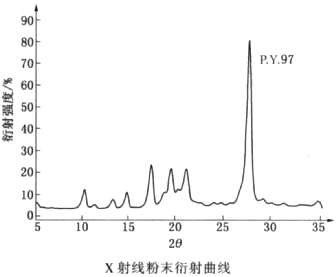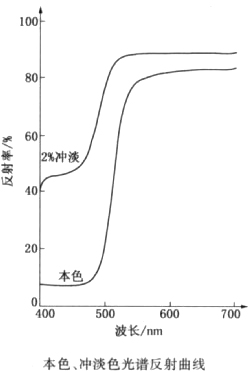N-(4-chloro-2,5-dimethoxyphenyl)-2-[[2,5-dimethoxy-4-(phenylsulfamoyl)phenyl]diazenyl]-3-oxobutanamide
N-(4-chloro-2,5-dimethoxyphenyl)-2-[[2,5-dimethoxy-4-[(phenylamino)sulphonyl]phenyl]azo]-3-oxobutyramide
CAS: 12225-18-2
Molecular Formula: C26H27ClN4O8S
N-(4-chloro-2,5-dimethoxyphenyl)-2-[[2,5-dimethoxy-4-(phenylsulfamoyl)phenyl]diazenyl]-3-oxobutanamide - Names and Identifiers
N-(4-chloro-2,5-dimethoxyphenyl)-2-[[2,5-dimethoxy-4-(phenylsulfamoyl)phenyl]diazenyl]-3-oxobutanamide - Physico-chemical Properties
| Molecular Formula | C26H27ClN4O8S |
| Molar Mass | 591.03 |
| Density | 1.2633 (rough estimate) |
| Vapor Presure | 0Pa at 25℃ |
| Appearance | Powder |
| pKa | 0.39±0.59(Predicted) |
| Refractive Index | 1.6100 (estimate) |
| Physical and Chemical Properties | hue or shade: brilliant yellow relative density: 1.30-1.41 Bulk density/(lb/gal):10.8-11.7 melting point/℃:330 average particle size/μm:0.16 particle shape: Rod shape specific surface area/(m2/g):26(FGL) pH value/(10% slurry):8 oil absorption/(g/100g):40-52 hiding power: translucent diffraction curve:  reflex curve:  |
| Use | There are 15 types of the product on the market. Neutral yellow is given, approximating C. I. pigment yellow 1. In baking and self-drying paint, the light fastness is 6-7, and the heat resistance is good (200 C/10min), which is used for high-grade decorative coatings and plastic coloring. In soft and hard PVC transparent and non-transparent light resistance up to 7-8; HDPE does not occur in the size of deformation of 240 ℃/5min; Can also be used for polystyrene and PE coloring; in ABS light fastness to 7, and the requirements of light, weather fastness, heat and alkali printing ink, latex paint and water-based paint coloring. |
N-(4-chloro-2,5-dimethoxyphenyl)-2-[[2,5-dimethoxy-4-(phenylsulfamoyl)phenyl]diazenyl]-3-oxobutanamide - Reference Information
| LogP | 1.3 at 26℃ and pH7 |
| EPA chemical substance information | information is provided by: ofmpeb.epa.gov (external link) |
Last Update:2024-04-10 22:29:15
![N-(4-chloro-2,5-dimethoxyphenyl)-2-[[2,5-dimethoxy-4-(phenylsulfamoyl)phenyl]diazenyl]-3-oxobutanamide](http://res.chembk.com/assets/str/2d/1/12/12225-18-2.png)
Supplier List
View History